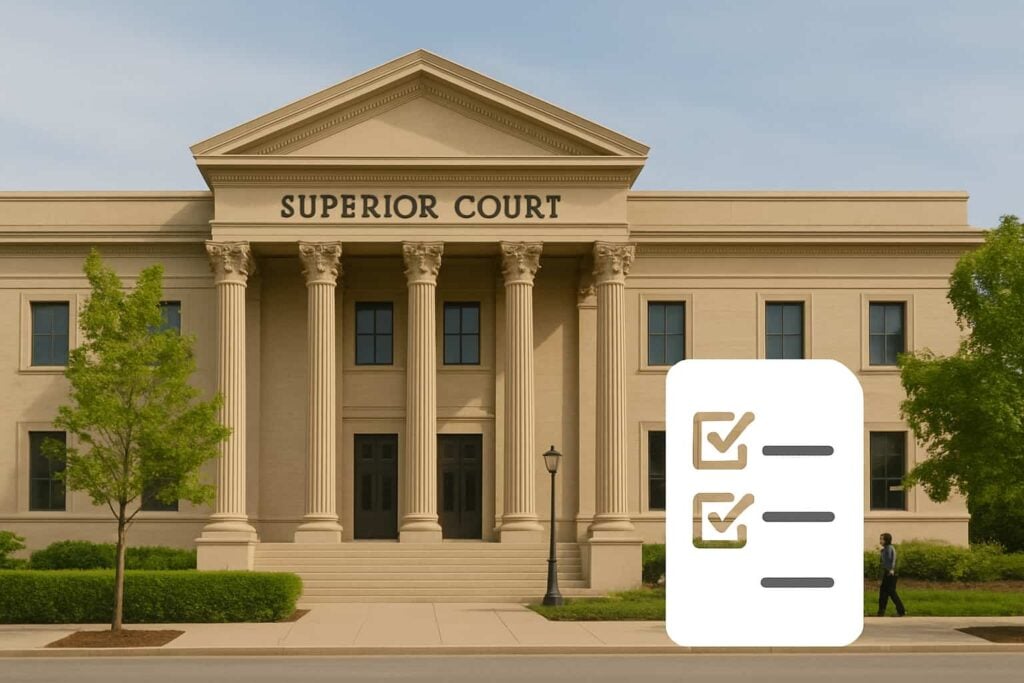Common California Probate Mistakes Heirs Make (And How to Avoid Them)
Inheriting assets through California probate can be an emotionally challenging experience made even more difficult when avoidable mistakes create unnecessary delays, expenses, and stress. Whether you’re a beneficiary waiting for your inheritance or an executor managing an estate, understanding the most common pitfalls can help you navigate the California probate process more smoothly.
After working with California heirs over the years, we’ve seen the same mistakes repeated time and again. The good news? Most of these errors are entirely preventable with the right knowledge and preparation. Let’s explore the most common California probate mistakes heirs make and, more importantly, how to avoid them.
Mistake #1: Not Understanding California’s Unique Probate Requirements
California has some of the most complex probate laws in the United States, with specific procedures that differ significantly from other states. Many heirs make the critical mistake of assuming probate works the same everywhere or relying on general advice that doesn’t apply to California’s system.
California probate involves unique requirements like mandatory court hearings, specific notice periods, and detailed accounting procedures. The California probate timeline typically extends 12 months or longer, significantly longer than many other states. Understanding these California-specific rules from the start helps you set realistic expectations and plan accordingly.
Each of California’s 58 counties also has its own local rules and procedures. What works in Los Angeles County might differ slightly from procedures in San Diego, Orange, or Sacramento counties. This is why familiarity with local court practices matters so much.
Mistake #2: Working with Companies Unfamiliar with California Probate
One of the biggest mistakes heirs make is choosing to work with out-of-state companies or service providers who lack specific experience with California probate procedures and local county jurisdictions. California’s probate system is unique, and what works in other states often doesn’t apply here.
When you need financial assistance during probate, it’s crucial to work with a company that specializes in your state’s specific procedures. Companies unfamiliar with California’s probate code, local court rules, and county-by-county variations can cause significant delays and complications in your case.
Finding the right probate advance provider is essential. Resources like Inheritance Lender, a directory of probate advance companies organized by state, can help you identify providers who specialize in California probate. When you’re already dealing with the stress of probate, choosing a company that understands California’s unique requirements makes all the difference in getting the help you need efficiently.
Mistake #3: Delaying the Probate Process

Some heirs make the mistake of putting off initiating probate, thinking they’re avoiding hassle or expense. However, delaying California probate almost always makes things worse, not better. California law requires that anyone in possession of a decedent’s will must file it with the court within 30 days of learning about the death.
Delaying probate creates multiple problems. Property taxes, insurance, and maintenance costs continue to accumulate on estate assets. Real estate can deteriorate without proper care. Bank accounts may be frozen, preventing payment of ongoing expenses. In some cases, delays can even expose the estate to legal penalties or allow creditor claims that might otherwise have been barred.
The sooner you begin the California probate process, the sooner you can work toward distribution. While probate takes time regardless, starting promptly prevents additional unnecessary delays.
Mistake #4: Failing to Communicate with Other Beneficiaries
Family dynamics during probate can be complicated, especially when emotions are running high after losing a loved one. One common mistake is poor communication among beneficiaries, which often leads to misunderstandings, suspicion, and even litigation.
When beneficiaries don’t receive regular updates about the probate process, they may become concerned about the executor’s actions or question why things are taking so long. This lack of communication frequently spawns disputes that could have been easily avoided with transparency and regular status updates.
As an executor, keep all beneficiaries informed about major developments, court dates, and the general timeline. If you’re a beneficiary and not receiving updates, don’t hesitate to ask questions. Clear communication prevents most conflicts before they start.
Mistake #5: Not Keeping Meticulous Financial Records
California probate courts require detailed accounting of all estate transactions. Executors who fail to maintain meticulous financial records create serious problems for themselves and can face personal liability. Yet poor record-keeping remains one of the most common mistakes in California probate cases.
Every dollar that comes into or goes out of the estate must be documented. This includes income from investments, rental properties, or business operations, as well as every expense paid on behalf of the estate. Keep receipts, bank statements, cancelled checks, and detailed logs of all financial activities.
When it comes time to file your accounting with the court, having organized records makes the process straightforward. Without proper documentation, you may face objections from beneficiaries or the court, leading to costly delays and potential legal issues.
Mistake #6: Missing Critical California Probate Deadlines
California probate involves numerous deadlines that must be met. Missing these deadlines can result in delays, additional court hearings, or even removal of the executor. Common deadlines include:
- Filing the Inventory and Appraisal within 4 months of appointment
- Providing notice to creditors within specific timeframes
- Filing required accountings and reports
- Responding to creditor claims within designated periods
Each county may have additional local deadlines for filing documents or scheduling hearings. Understanding and tracking these deadlines is essential for keeping the probate case moving forward efficiently.
Mistake #7: Trying to Handle Complex California Probate Without Legal Help
While some simple California probate cases can be handled without an attorney under the Independent Administration of Estates Act (IAEA), many heirs make the mistake of tackling complex situations without professional guidance. California probate law is intricate, and even small errors can have significant consequences.
Consider hiring a California probate attorney when the estate involves:
- Substantial assets or real estate
- Business interests
- Disputes among beneficiaries
- Complex tax issues
- Claims against the estate
- Out-of-state property
The cost of an attorney often pales in comparison to the expenses and delays caused by mistakes. California probate attorneys understand the local procedures and can navigate the system efficiently, ultimately saving time and money for the estate.
Mistake #8: Not Understanding the Difference Between Full and Limited Authority
In California probate, executors can petition for either full authority (under IAEA) or limited authority. Many heirs don’t understand the significant difference between these two options, which can impact how quickly and efficiently the estate is administered.
With full authority, the executor can handle most estate matters without court approval, including selling property (with some exceptions). With limited authority, nearly every significant action requires a court hearing and approval, which substantially extends the probate timeline.
If you’re named as executor, discuss with your attorney whether full authority is appropriate for your situation. This single decision can dramatically affect how long probate takes and how much it costs.
Mistake #9: Neglecting to Address Estate Property Properly
Real estate in California probate requires special attention. Some heirs make the mistake of letting estate property sit vacant and deteriorate, or they move into property without understanding the legal implications. Others fail to maintain proper insurance or pay property taxes on time.
Selling estate property during California probate requires understanding specific procedures. Whether you need court approval depends on the type of authority granted to the executor. Properties sold under limited authority require court confirmation, which can result in the property being overbid by other buyers at the confirmation hearing.
Maintain all estate property properly, keep insurance current, and pay property taxes promptly. If you plan to sell, understand the requirements for your specific situation and consider whether you’re better off with a traditional sale or working with a cash buyer who understands California probate procedures.
Mistake #10: Not Exploring Financial Options During Probate
Many heirs struggle financially while waiting for California probate to conclude but don’t realize options exist to access funds during the process. They may deplete savings, accumulate credit card debt, or miss important opportunities simply because they didn’t know about probate advances.
Probate advances allow California heirs to access a portion of their inheritance before the probate case concludes. Unlike loans, these advances don’t require credit checks, employment verification, or monthly payments. You’re not personally liable if the estate doesn’t have sufficient funds to repay the advance.
For heirs facing financial pressure during California’s lengthy probate process, understanding your options can provide crucial relief. Whether you need funds for living expenses, business opportunities, or simply want access to your inheritance sooner, exploring probate advances designed specifically for California cases can make a significant difference. For more information on probate advances, read the California Probate Advance Guide: Everything Heirs Need to Know.
Mistake #11: Ignoring Tax Implications
California doesn’t have an estate tax, but federal estate taxes may apply to larger estates, and there are always income tax considerations. Many heirs make the mistake of not understanding or planning for tax obligations associated with their inheritance.
Income earned by the estate during probate is taxable. The estate must file income tax returns, and beneficiaries may have tax obligations when they receive certain types of inherited assets. Real estate receives a “step-up” in basis to fair market value at the date of death, which can have significant capital gains implications if the property is later sold.
Consult with a tax professional who understands California inheritance laws and federal estate tax rules. Understanding California inheritance laws and their tax implications helps you plan appropriately and avoid unexpected tax bills.
Mistake #12: Not Taking Advantage of California’s Recent Probate Reforms
California recently enacted significant probate reforms that many heirs don’t know about. New California probate rules effective in 2025 allow primary residences valued at $750,000 or less to potentially bypass traditional probate through a simplified process.
Heirs who don’t stay informed about these changes may go through full probate when a simpler alternative exists. These reforms can save months of time and thousands of dollars in legal fees and costs. Make sure you or your attorney are aware of all options available under current California law.
Moving Forward: Avoiding These Common Pitfalls
The California probate process doesn’t have to be overwhelming. By understanding and avoiding these common mistakes, heirs can navigate probate more efficiently and with less stress. Here are key takeaways:
Work with California specialists who understand the state’s unique probate procedures and local county requirements. Whether you need legal help, probate advances, or property services, California-focused expertise matters.
Start the process promptly and don’t delay initiating probate. The sooner you begin, the sooner the estate can be settled.
Communicate clearly with all beneficiaries and keep detailed records of everything. Transparency prevents most disputes and protects executors from liability.
Understand your options for authority levels, property sales, and financial assistance during probate. Knowledge empowers better decision-making.
Stay informed about California probate laws, deadlines, and reforms that may benefit your specific situation.
Get the Support You Need for California Probate
If you’re an heir waiting for California probate to conclude and need financial assistance now, you have options. Whether you’re dealing with unexpected expenses, business opportunities, or simply want access to your inheritance sooner, probate advances designed specifically for California cases can help.
At Probate Lend, we specialize exclusively in California probate and understand the unique procedures in every California county. We can typically provide funding within 24-48 hours to qualified California heirs. Learn more about what probate advances are and whether they’re right for your situation.
The California probate process will eventually conclude, but you don’t have to face financial pressure while you wait. By avoiding these common mistakes and working with California probate specialists, you can navigate this challenging time with greater confidence and peace of mind.
Common California Probate Mistakes Heirs Make (And How to Avoid Them) Read More »





















